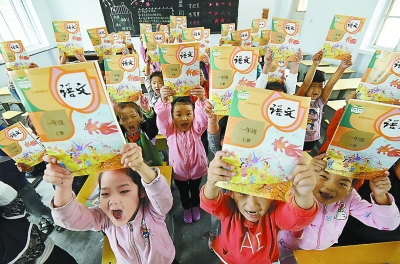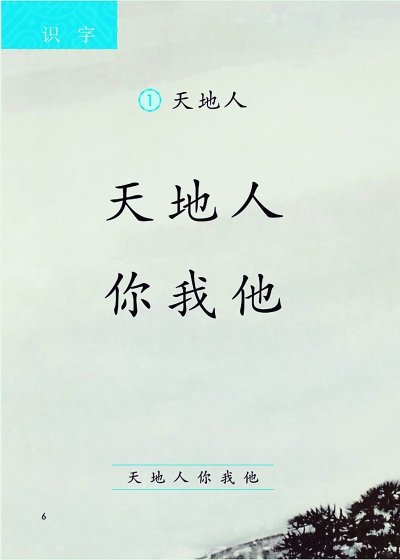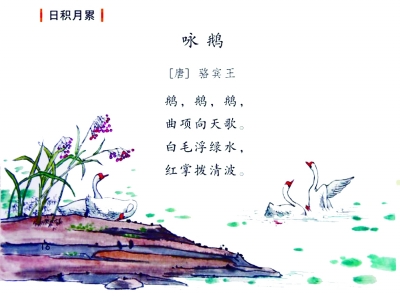Four major changes in the compilation of Chinese textbooks in primary and secondary schools


Starting from the beginning of school this autumn, the textbooks compiled by the Ministry of Education will be used uniformly in the three subjects of Chinese, history, morality and rule of law in primary and secondary schools in the national compulsory education stage. Among the three subjects, compiling Chinese textbooks is the most concerned by the society. Here, we invite experts who participate in the compilation of teaching materials to interpret the changes for teachers, students and parents.
Change 1
Learn to read first and then learn pinyin.
When I open the Chinese textbook for the first grade of primary school, I first see the column "I went to school". After "I went to school", I arranged a literacy unit first, and then pinyin teaching. This is an important change in the compilation of Chinese textbooks, that is, the arrangement order is to learn pinyin first.
For so many years, I have been learning pinyin first and then Chinese characters. Why should we change the convention in compiling Chinese textbooks? Chen Xianyun, executive editor-in-chief of the Chinese textbook for primary schools, researcher of the Institute of Curriculum Textbooks and chairman of the Chinese Teaching Committee for Primary Schools of China Education Association, explained that the purpose of Chinese learning is to learn languages and Chinese characters, not pinyin. This change clearly defines the relationship between pinyin and literacy, that is, literacy is the purpose and pinyin is the means.
From years of practical experience, there are some problems in the teaching of primary school students learning pinyin first and then learning Chinese characters. For example, primary school students have little literacy. After learning Pinyin, they can read articles with the help of Pinyin. However, many students are lazy, and even if they can recognize many words, they are not willing to consolidate their memory, but read the pronunciation with the help of pinyin.
In fact, the language environment in our country has already changed, and literacy resources are everywhere in our life. For example, parents can teach their children to read whenever and wherever they visit the park, take the elevator or take the train. It can be said that school-age children are more familiar with Chinese characters than pinyin, and many children are already learning and using Chinese before entering school.
The survey shows that 90% school-age children know "heaven" and "man" before entering school, while 80% school-age children know "earth". Therefore, in the "literacy" unit, the first lesson presented to freshmen is to learn to recognize the words "heaven, earth, people, you, me and him" "Starting with what they are familiar with can improve their psychological acceptance, ease the pressure of learning Chinese, reduce the difficulty of learning and reduce their fear of difficulties." Chen Xianyun said.
Of course, the function of Pinyin cannot be ignored. Students in the lower grades have a small amount of literacy, so they can read long articles with the help of Pinyin, especially in some dialect areas, and Pinyin is particularly important for learning Putonghua. In addition, students come from different families. Although they know some Chinese characters before entering school, they don’t necessarily understand the meaning of the words. They need to look up the words in the dictionary with the help of Pinyin, and they can’t throw away this crutch until they gain a certain language ability. Therefore, the role of Pinyin is very important and should be studied.

Change 2
A large number of ancient poetry articles have been added
The Chinese textbook for compulsory primary schools is an important carrier for inheriting the excellent traditional culture of the Chinese nation. According to the requirements of the Chinese Curriculum Standard for Compulsory Education (2011 Edition) and the spirit of the Ministry of Education’s "Guiding Outline for Perfecting Chinese Excellent Traditional Culture Education", the unified compilation of Chinese textbooks for primary schools has made some efforts and attempts in promoting excellent traditional culture.
A total of 129 ancient poems were compiled in the Chinese textbook compiled by primary schools, accounting for about 30% of the total number of articles. Among them, there are 112 ancient poems, 14 classical Chinese and 3 classical masterpieces. In addition to ancient poems, ancient fables, myths and legends, and historical stories, we also select the contents that are in line with the characteristics of today’s times and have positive significance from traditional enlightenment reading materials such as San Zi Jing, Hundred Family Names, Qian Zi Wen and Di Zi Gui. There are 132 ancient poems in junior high school, which is slightly more than before. From The Book of Songs to poems in Qing Dynasty, from essays of various schools, historical essays, ancient prose in Tang and Song Dynasties to essays in Ming and Qing Dynasties, they are all presented.
Some of the ancient poems in primary schools are required to be recited by the curriculum standards, and some are already known by children when they read the vernacular. For example, since the third grade, textbooks have been compiled in classical Chinese every semester, such as Sima Guang, Waiting for the Rabbit, and Contradictions. Students are already familiar with the vernacular of these texts, so they will not have much difficulty in understanding them. Moreover, the length of the selected classical Chinese is short and the text is concise. Sometimes there are only three or five sentences in a text, so primary school students will not feel hard to learn.
Different from the past, the compilation of Chinese textbooks in primary schools has greatly strengthened the accumulation of ancient poetry. It is understood that in addition to the 75 ancient poems recommended in the Chinese curriculum standard, more than 540 ancient poems suitable for primary school students to read and recite are also selected in the textbook. Most of these ancient poems did not appear in the form of texts, but were added to the column of "Accumulate over a long period" after class. The teaching requirement of this column is for students to recite and accumulate, but the understanding of the meaning of the poem and the feelings expressed by the poet are not required. When students reach a certain age, they will understand their own meanings and use them freely in life and work.
The study arrangement of classical Chinese has also been adjusted. Take the Chinese textbook for primary schools published by People’s Education Press as an example. In the past, classical Chinese was compiled from the second volume of the fifth grade of primary schools, while the unified textbook advanced the teaching of classical Chinese to the third grade of primary schools. With the increase of grade, the difficulty and quantity gradually increase.
In addition, many idioms, famous sayings and epigrams, couplets, riddles, proverbs, two-part allegorical sayings, ignorant reading materials, cultural common sense and other contents have been added to the Chinese textbook compiled by primary schools, in order to help students lay a good foundation for traditional culture by accumulating a certain amount of traditional culture. The comprehensive learning in junior high school has designed a series of special activities around traditional cultural keywords such as "friends", "faithfulness" and "harmony".
